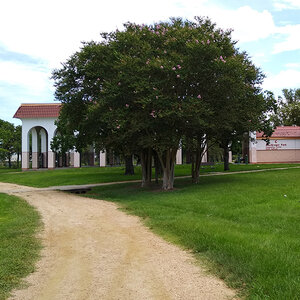Along the Way in Planned Giving: Trail Snacks for Gift-Planning Trekkers
Trail snacks. Years ago, in our BK days (before kids), my wife and I took many extended backpacking trips in the High Sierras. Believe me when I say that we became well-acquainted with the concept of trail snacks. On one trek we made the mistake of enduring a nine-day trip with only one kind of trail snack — some sort of dried soy bean and raisin concoction. We became so tired of the same old snacks that we took to calling them "snail tracks." Yuck.
I learned a valuable lesson on that trip: Bring a variety of trail snacks.
Along the Way in Planned Giving: Trail Snacks for Gift-Planning Trekkers is to development professionals what a variety of trail snacks are to a backpacker: We get energy and enjoyment and don't have to have the same thing, day in and day out. No snail tracks here!
This 128-page softbound book contains 74 vignettes drawn from the experiences of G. Roger Schoenhals, editor and publisher of the respected monthly newsletter "Planned Giving Today."
Like his 1995 On My Way to Planned Giving (Inspiring Anecdotes and Advice for Gift-Planning Professionals), which I favorably reviewed several years ago, this latest collection of anecdotes and article-morsels showcases Roger's gift for combining his twin loves of planned giving and the great outdoors. His entertaining writing inspires us to do better while providing the "trail snacks" to keep moving along the planned giving trail.
Those who are looking for technical articles on planned giving techniques should keep looking this is about inspiration and not about nuts and bolts. As Roger notes in his Introduction, "the first-person accounts remind us that the essence of planned giving, after all, is not about tax laws and legal documents important as these may be but about people, relationships, family treasures and the spirit of giving. It's about backpacking on the slopes of philanthropy."
Here's one of the vignette's (No. 57, chosen at random, and also because it's short enough to quote here):
A friend of mine, a planned giving officer, told me about a plaque his wife displays in their home. She is a school teacher and this plaque reminds her of what her profession is all about. It reads, "I teach; I touch the future."
My friend said, "I feel the same way about planned giving. I may not live in the limelight or drive around in a limo, but I have the deep satisfaction that what I do will outlive me. Through the planned gifts I help to establish and the endowments I arrange, I am touching the future.
There, isn't that a gem? Another one, No. 34, is too long to quote in its entirety. It's entitled "Trail Trial." Here Roger describes how he coaxed a colleague, a director of development, to join him on a trip to Alpine Lakes Wilderness Area. This was to be David's first hiking overnight hiking trip. Roger picked him up at 3 a.m. (!) and drove him to the trail head. They hiked up the trail for two miles and when they met a couple of hikers coming down the trail Roger asked, "How much further to the turnoff to Lake Colchuck?" The hikers looked at each other and informed him that he was on the wrong trail that the trail was a half-mile further up 8-Mile Creek. They trudged back down the trail, and re-started their hike on the right trail. The lesson? According to Roger: "Whether working with a donor prospect, a volunteer or a staff member, we would do well to always read the signs and make sure we're on the right trail. It's called 'being worthy of trust.'"
Now, I didn't do Roger's vignette No. 34 justice (since I summarized it), but this gives you a flavor of what to expect. Having just read the book cover to cover, I'm please to report that there's not a single snail track to be found just a rich, inspiring bear-proof container of trail snacks.
One thing. As with his 1995 collection of vignettes, this is not just for folks who focus on planned giving. It's for anyone who has ever swallowed hard, knocked on the door of Mr. Smith or Mrs. Jones, and asked for a gift (or thinks they might, some day). Since the book is not about particular techniques and laws and taxes and such, it can be enjoyed by development professionals not just in North America, but in the UK, Australia, or indeed anywhere.







